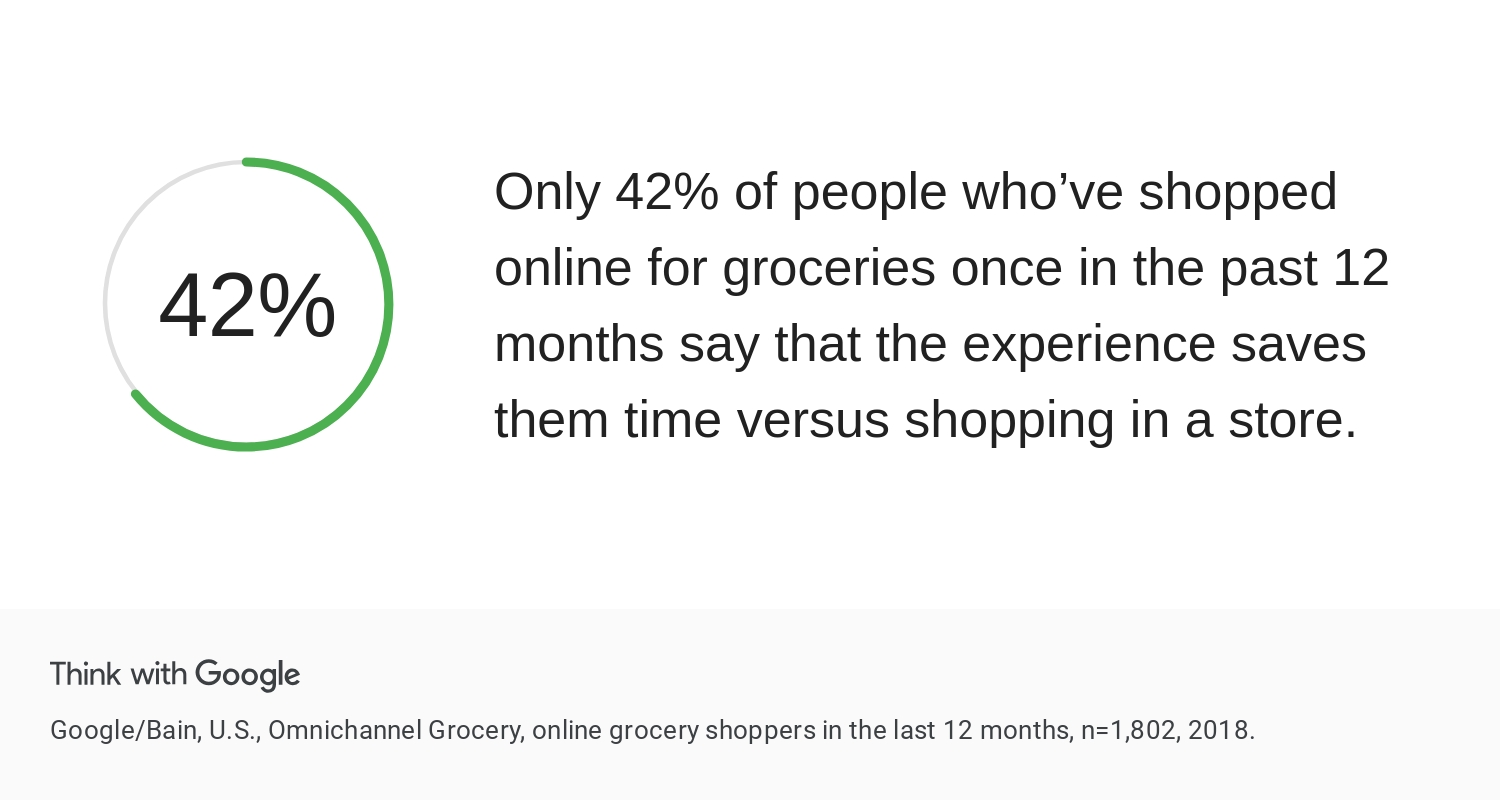Bojan Bajic is the Head of Marketing at Infinum, a New York-based agency that helps companies transform their business with digital products. The views expressed here are those of the author.
Online grocery shopping in the U.S. is expected to more than double its market share by 2025. This sharp growth has been strongly fueled by the ongoing COVID-19 pandemic, with lockdown orders becoming the new norm every time the outbreak gets out of hand. To capitalize on this accelerated growth, more and more grocery retailers have been turning to online business models.
Yet, making the switch is not the easiest task, especially for retailers who have been previously relying only on a brick-and-mortar shop to fulfill their customers’ needs. Here we take a look at the five critical mistakes retailers often make when making the move to an online business model.
1. Poor user experience
No customer in the world likes to wait to be serviced. Similarly, there is nothing more frustrating for a potential customer than navigating a slow grocery website. Even if your website is the most aesthetically pleasing and comprehensive, your visitors’ patience will reach its limits sooner than you think if your online store loads slowly. Users want to be in control of their experience, and poor loading speed can deter even the most loyal fans of your brand. Statistics from Google show that only 42% of online grocery shoppers find that online shopping saves them time, compared to shopping in a store.

Recommended solution: Optimize your online store speed and get it to load in under 3 seconds. Since most of your products will have images, start from there and compress your product images before uploading them. Along with optimizing page loading speed, try taking a closer look at your web design. UX can be greatly improved with a clean, consistent design that is easy to navigate. The website hosting also needs to be picked carefully; go for a hosting provider that has servers in the region where your primary audience is located. The closer the server is to people browsing your website, the faster it will load. You can check your website’s loading speed with online tools, such as Pingdom.
2. Lack of product information
While price and choice are incentives for customers to buy, information about the product is just as important. When in a store, customers can view products from all angles, evaluate the quality and in some cases even try them. Additionally, those looking for more information can rely on product packaging or talk directly to the store's salespeople. When selling online, however, this kind of direct interaction is unavailable. This is even more problematic when you offer products that are not well known to the public.
Recommended solution: Ensure all products listed on your online store have the maximum information possible on their product page. Stand out from the competition by avoiding the easy and incomplete solution of using the manufacturer's description. Be as detailed as possible and go for descriptive words rather than technical terms. Complement your description with product characteristics and specifications. Additionally, you take it one step ahead by providing small videos demonstrating your products. This could have a positive impact on your visitors who will no longer see you as a simple reseller, but as a specialist in his field. Keep in mind that the higher the purchase value of your product, the more information your customer needs to make a decision.
3. Poor management of out-of-stock products
Managing your product inventory and updating your online store accordingly is essential to maintain a positive customer relationship. Picture this: you are adding several items to your online shopping cart, you fill in all your delivery details, confirm the payment and in the end, you receive an email saying the product is out of stock. That’s more than enough to make you lose your credibility as an online grocery retailer, especially in times when people are stocking up their precious rations, not knowing when the lockdown orders will be over.
Recommended solution: Even with all the goodwill in the world, going through your product inventory and orders to update your online store can quickly get out of hand if you offer thousands of products and process thousands of orders regularly. Automate this process as much as possible to avoid unnecessary headaches and reduce the number of human errors. Go for online shopping platforms that have built-in capabilities to update your online inventory in real-time. Also, ensure your inventory numbers are accurate when filling in the product SKUs for the first time.
4. Complex checkout process
Optimizing your checkout process is a crucial piece of the puzzle. When a customer reaches your checkout page, the process should be seamless and straightforward. Yet, some online stores force their users to create an account in order to place an order. While it is highly recommended to capture information about your customers in order to continue off-site communication (newsletter and retargeting), this practice can be costly. On the one hand, no one appreciates being forced to do something, and on the other, all customers are looking for simplicity and speed above all.
Recommended solution: Offer your visitors an alternative way to complete their checkout process (i.e., without having to create a user account). Make capturing emails optional, by allowing them the possibility to skip this step. This can be easily achieved through optional checkboxes on the payment page, asking the customer if they would like to receive additional communication in the future.
5. Hard-to-reach customer service
Last but not least, customer service should not be neglected in order to preserve the reputation of your site and the loyalty of your users. An online store that makes it hard to reach out to customer service can prompt potential customers to steer clear. Lack of transparency or communication can hurt your reputation, even if you have a well-established brand image offline. Buyers need to be sure of an online store’s credibility when they are about to give out sensitive information, such as banking or other personal information.
Also, they want to be sure that a representative will be accessible in case of complications with their order (product returns, delivery delays, product or shipping address errors, etc.). The higher the price or technical features of your product, the more likely your visitor is to contact you.
Recommended solution: First off, be sure your online store has an ‘About us’ page clearly filled with your brand, registered business number and contact information. Additionally, consider including your business phone number on every page of your website, either in the header or the footer, as this reinforces the fact that you are not just another shady online store. Having a contact form is also highly recommended, as this allows visitors to contact you outside of business hours. Bonus points if you have a live chat feature and a frequently asked questions (FAQ) section to lighten the load on your customer service. Even though live chat can greatly benefit customer experience and improve conversion rate, this is not a viable option for everyone. In this case, you can always go for chatbots. They’re a great alternative, cost less and are more than capable of providing customer support when set up properly.
Set your online business up for success
Switching to an online business model can be a daunting task, especially if you have been running a brick-and-mortar grocery store for most of your life. If you want to run a successful and sustainable online grocery store, be sure to avoid the five mistakes noted above.
There is no denying that online grocery shopping is on the uptrend and is going to continue to grow in the post-COVID era.





